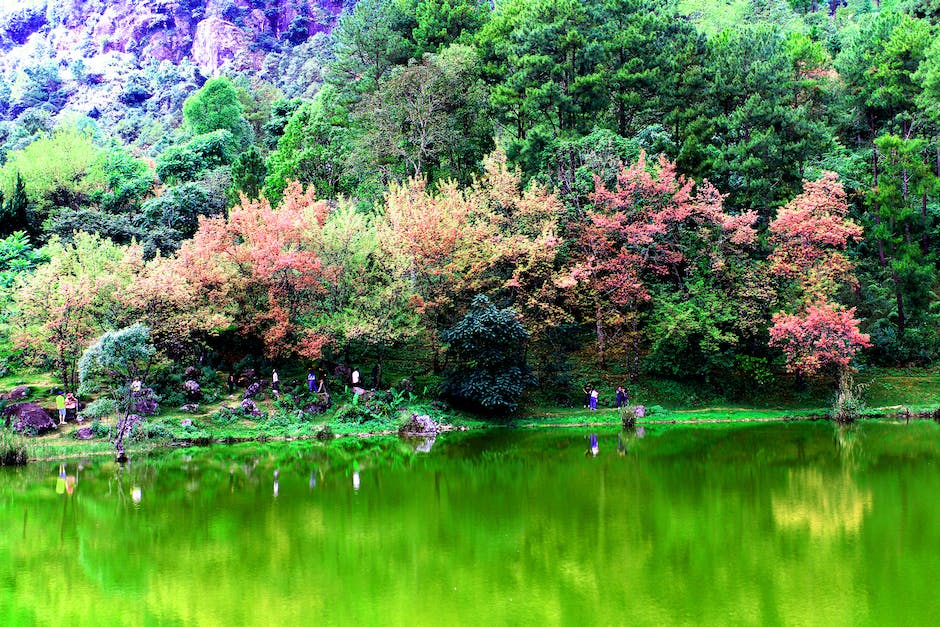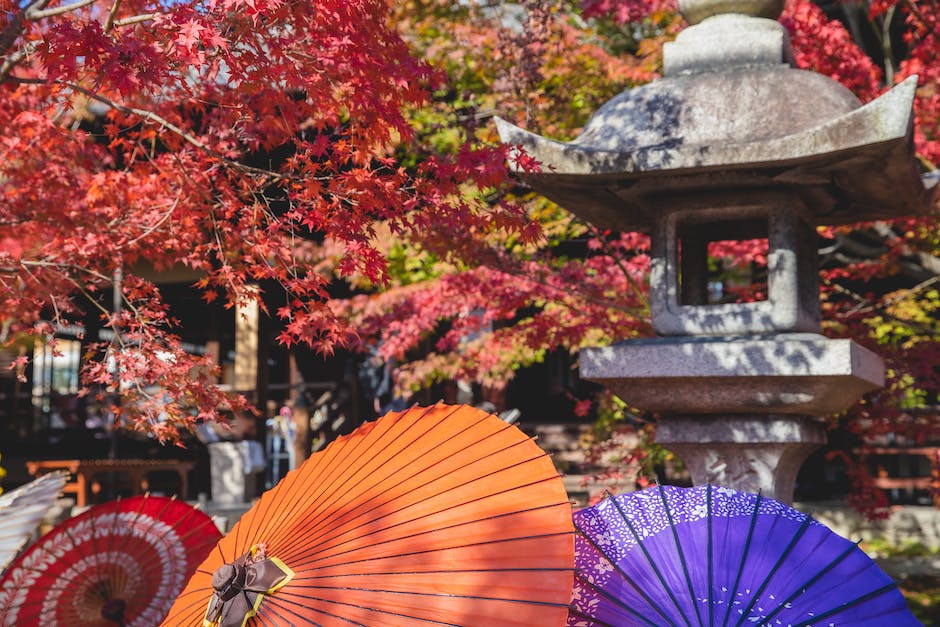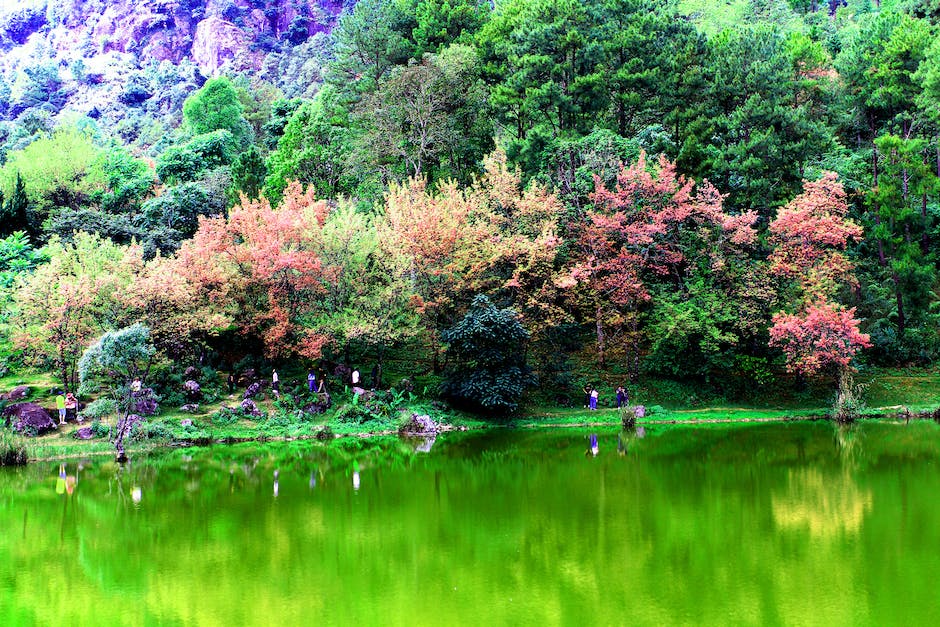No, Japanese Maple trees are not easy to grow. They are slow growing, and have specific requirements for soil, sun, and water. They are also susceptible to pests and diseases. However, Japanese Maple trees are beautiful and different from other trees, so many people are willing to put in the effort to grow them.
Yes, Japanese maple trees are easy to grow. They are low-maintenance trees that can thrive in a variety of conditions.
Where do Japanese maples grow best?
Japanese maples grow best in well-drained, acidic soil that is high in organic matter. While they can be grown in poor soil, their growth rate is much slower and trees are more likely to experience stress.
This is a specific type of tree that grows at a slow to medium rate. The height increase per year is anywhere from less than 12″ to 24″. This is a great tree for those who want a slower growing option.
Are Japanese maples hard to maintain
Japanese maple trees are best planted in the spring or fall. They require extra attention in the first few years while they’re getting established, but after that they’re easy-to-grow, low-maintenance, and hardy.
Drought tolerance is an important attribute for trees, especially in locations where water is scarce. These trees are quite drought-tolerant when mature, but like most young trees, they need regular deep waterings during the first few years. Plan to water heavily twice a week during normal weather and three or even four times weekly in periods of drought.
How close to a house should you plant a Japanese maple?
Japanese maples do well when carefully pruned so can be planted just a metre from the house. The north and east sides of the house are ideal locations for Japanese maples (morning sun only).
Japanese maples are beautiful trees that are perfect for any garden. They are easy to care for and prefer loose, well-draining, moist, slightly acidic soil. Fall is the best time for planting, so the roots can get established while the rest of the tree is dormant. Spring planting is also possible after the last frost.
Do Japanese maple trees lose their leaves in the winter?
Japanese maples are deciduous trees and lose their leaves every year. During October and November, they provide a lovely show of fall color. Then, in late November or December, the leaves drop.
The Japanese maple is a beautiful tree that is stunning in all seasons. The leaves emerge cherry-pink in spring, turn red for the summer and become crimson in fall – a glory all year round.
What is the lifespan of a Japanese maple tree
One hundred years is a long time, and that’s how long Japanese maples can live if they’re given the right care. In the wild, these trees can grow up to two feet per year, but in captivity, they typically grow a bit slower. If you’re considering purchasing a Japanese maple, it’s best to buy the largest one you can afford, as they’ll only get bigger with age. With proper care, your Japanese maple could be a part of your family for generations to come.
While their shallow roots make Japanese maples fantastic for container growing and for growing near rock walls, it’s important to note that they’re still living trees with specific needs – they need well-drained soil, protection from freezing temperatures, and regular watering during the growing season. With a little care, your Japanese maple will provide years of beauty in your landscape!
Do Japanese maples get too much sun?
If your Japanese maple tree is suffering from leaf scorch every year, you might want to consider digging it up and relocating it to a spot that gets some shade protection. Alternatively, you could plant a taller tree beside it that will eventually provide shelter from the sun.
When planting a Bloodgood Japanese maple tree, it is best to choose a spot that receives partial shade, or about four hours of direct, unfiltered sunlight per day. The tree can also grow in full sun, but it will produce more vibrant and vibrant foliage colors in a shadier planting site.
Can Japanese maples grow in pots
Japanese maples (Acer palmatum) are excellent ornamental trees that can be grown in pots. Their small stature and relatively slow rate of growth make them perfect for containers. They are also known for their beautiful foliage, which can be variegated or in shades of crimson, orange, or yellow. Japanese maples require little to no pruning and are relatively easy to care for, making them ideal trees for beginners or those with limited gardening space.
Japanese maples are notoriously finicky trees, and summertime is when they are most prone to stress and damage. Here are a few tips to help keep your Japanese maple healthy and happy all summer long:
-Keep the soil moist, but not waterlogged. A layer of mulch will help to keep the roots cool and moist.
-Give the tree afternoon shade. This will protect it from the harsh afternoon sun and prevent leaves from getting scorched.
-Choose a variety that is resistant to sun damage. Some varieties are more tolerant of heat and direct sun than others.
Can Japanese maple grow in hot climate?
Japanese maples are fairly heat tolerant, but they may scorch in hot, dry climates. Protection from the afternoon sun is important.
When deciding on a Japanese maple, it is important to consider the size and form of the tree. Japanese maples range from 2 to 30 feet tall, and come in weeping, rounded, dwarf, mounding, upright, or cascading forms. Choosing the right form of tree depends on how you want to use it.
Which Japanese maples stay small
Dwarf Japanese maples are perfect for small spaces in the landscape. They have small leaves and short internodes which give them a compact appearance. They grow slowly and mature at about six to eight feet depending on the cultivar.
It is generally considered bad feng shui to plant trees in front of the door, as it can block the flow of good energy into the home.
What soil do Japanese maples like
Japanese maples are stunning small trees that are perfect for adding interest and beauty to any garden. They can be grown in a wide range of soils, but they will thrive best in soils that are well-drained and contain plenty of organic matter. For best results, add some garden compost or bagged soil conditioner to your planting hole before adding your Japanese maple tree.
Japanese maples are beautiful trees that are popular in gardens and landscapes. They are known for their delicate foliage and branching structure. Japanese maples need to be planted in acidic, sandy soil in order to thrive. You can create your own planting mix by blending 30% peat moss, 40% sand, and 30% native soil. When you feed your maple, use an organic acid mix fertilizer to maintain the correct soil acidity. With proper care, your Japanese maple will be a stunning addition to your yard for years to come!
How much water does a Japanese maple need after planting
Without enough rain, water your Japanese maple only as needed to keep the roots and surrounding soil damp to moist, not wet. Keep in mind that deep soaking less frequently is much better than splashing just a little water around the tree every day.
Aconitifolium is one of the most beautiful Japanese maples, and offers deeply cut, fern-like green foliage that turns shades of red, orange, and yellow in fall. This tree, also called ‘Maiku Jaku’, changes up the beautiful texture you’ve come to expect from most Japanese maples.
Can Japanese maples be overwatered
While over watering is a common cause of decline for Japanese Maples, it is important to note that they can appreciate wet soil during its first few years of being planted. If your leaves are turning brown/black at the tips, this could be a sign of over watering.
Japanese maples (Acer palmatum) are a popular tree species known for their beauty and Grace. They are also popular in bonsai form. In addition to being ornamental, Japanese maples have many health benefits.
The bark, leaves, and twigs of the Japanese maple have been used for medicinal purposes for centuries. Japanese maples contain antioxidants and therefore can help protect cells from damage. They also have anti-inflammatory properties and can help reduce swelling. Japanese maples have been used to treat a variety of conditions including eye complaints, liver problems, and skin conditions.
There is some scientific evidence to support the use of Japanese maples for medicinal purposes. Studies have shown that components of Japanese maples can help protect liver cells, lower cholesterol levels, and reduce inflammation.
If you are considering using Japanese maples for medicinal purposes, it is important to consult with a healthcare provider first. Japanese maples are generally considered safe, but there is a possibility of side effects. Some people may experience skin irritation, stomach upset, or diarrhea when taking Japanese maples. It is also important to be aware that Japanese maples can interact with certain medications, so be sure to speak with a healthcare provider before taking them.
Is a Japanese maple a tree or shrub
Japanese maple is a perfect addition to any garden. They are hardy and easy to take care of, and they provide beautiful fall color.Japanese maples are small deciduous trees or large shrubs with broadly spreading crowns. They can be grown as small single-stemmed trees or large multiple-stemmed shrubs. Their habit is rounded to broad-rounded, with a layered branching structure similar to flowering dogwoods.Japanese maples are native to Japan, Korea, and China. They were introduced to Europe in the 1600s and to North America in the 1800s.Japanese maples come in a wide range of sizes, shapes, and colors. There are over 100 different cultivars available.
If your maple tree is not getting enough sun, it may not change colors in the fall. Poor soil and overfertilization may also cause your maple tree to not change to red colors. Have your soil tested if you are unsure of the problem.
What kills Japanese maple trees
To prevent phytophthora from killing your Japanese maple, make sure the tree has good drainage and avoid getting the leaves wet. If the tree is already infected, you can try treating it with a fungicide.
This tree is likely younger than 10 years old based on its height. The cultivar “Aoyagi” would be the same age but would be larger.
Warp Up
No, Japanese maple trees are not easy to grow. They are finicky and require a lot of care. They are also prone to disease and pests.
Japanese Maple Trees are not easy to grow. They require a lot of pruning and trimming to keep them looking good, and they are susceptible to diseases and pests. If you are not willing to put in the time and effort to care for a Japanese Maple Tree, then you should not get one.
Jackson Hill is a passionate arborist with years of experience in the field of trees. He developed his fascination with trees at a young age, spending countless hours exploring the forests and climbing trees. Jackson went on to study arboriculture and horticulture at Michigan State University and later earned a degree in forestry from the University of Michigan.
With his extensive knowledge and expertise, Jackson has become a trusted authority on trees and their impact on the environment. His work has helped shape the field of arboriculture and he continues to be a leading voice in the industry.
